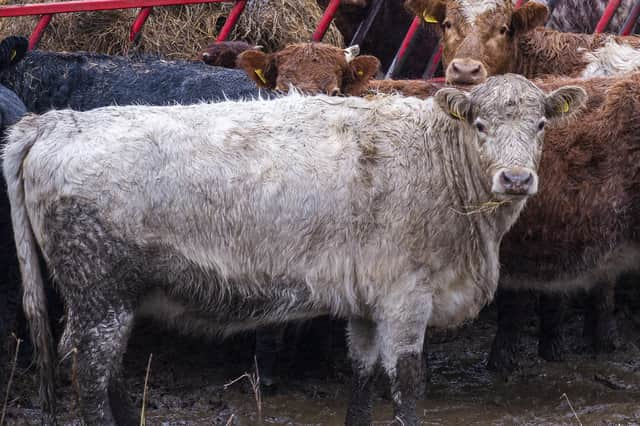head


But, with old habits dying hard, breaches of these rules remain one of the commonest reasons for financial penalties being applied to farm businesses, with contravention of the diffuse pollution regulations – General Binding Rule (GBR) 19 – often being discovered during official inspections.
In order to reduce the risks of leaching, poaching and erosion –and the associated penalties – alternative livestock watering systems, including solar-powered water troughs, have been undergoing trials by SAC Consulting as a way of helping farmers comply with Scottish Government legislation.
Advertisement
Hide AdAdvertisement
Hide Ad“Often GBR 19 breaches arise from stock visiting watercourses to drink,” said SAC Consulting’s environment team leader, Rebecca Audsley.
“As the regulations don’t require watercourses to be fenced off, we’ve been investigating and promoting solutions that take water from natural resources and pump it into well-sited water troughs, drawing livestock away from areas vulnerable to poaching and erosion, such as riverbanks.”
Audsley said a common system used a solar panel to charge a battery – with the battery powering a pump taking water from the burn and a float switch in the trough regulating water levels:
“The advantage of this design is that the battery can also be used to power an electric fence,” she added.
And while complete systems can be purchased off the shelf, many parts can be purchased on the internet at a fraction of the price, giving the technically proficient the opportunity to save on expenditure while still installing a system which will provide the needs of their cattle.
Beef specialist at the SAC, Robert Ramsay also runs 40 suckler cows and 300 breeding ewes himself – and pressure on the farm’s private water supply encouraged him to install two solar-powered troughs.
“On the private water supply, we couldn’t get water to two-thirds of the fields on the farm, so we relied on rivers and ditches for them to drink, which inevitably led to some poaching,” he said.
He added that mains water wasn’t an option and that they were conscious of the need to fence off the river access to prevent poaching and bank erosion.
Advertisement
Hide AdAdvertisement
Hide Ad“We looked at all the options and accessed AECS funding for two solar-powered pumps,” he said.
He said the pressurised system which worked just like mains water had been a “revelation” and had helped with other issues such as lameness in cattle when accessing stony areas close to rivers.
Audsley added: “One of the most surprising results of the farm trials was that, if well sited, livestock preferred drinking from troughs rather than getting in and out of the burn.
She said that which system was best suited to a given farm – or field – depended very much on the livestock, the topography and personal preference: “What’s important is that they all help farmers comply with regulations.”
Comments
Want to join the conversation? Please or to comment on this article.